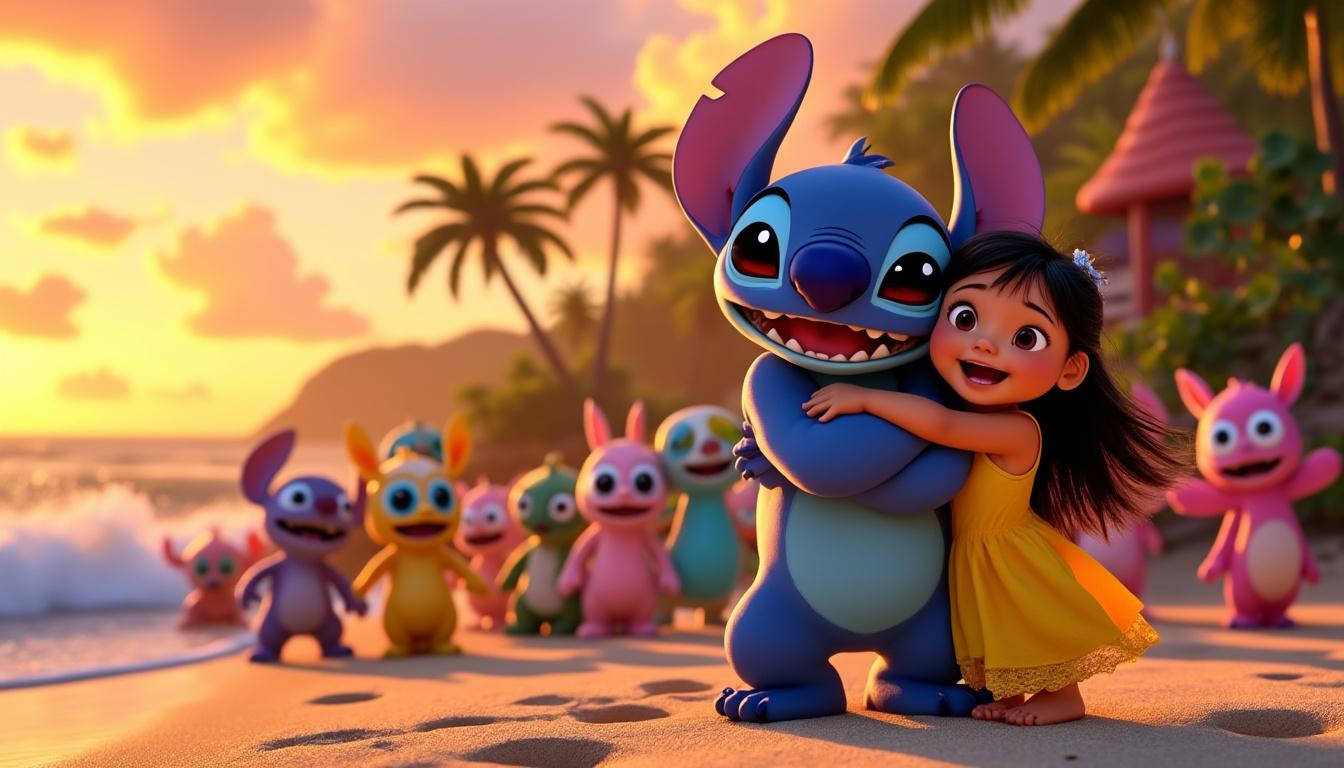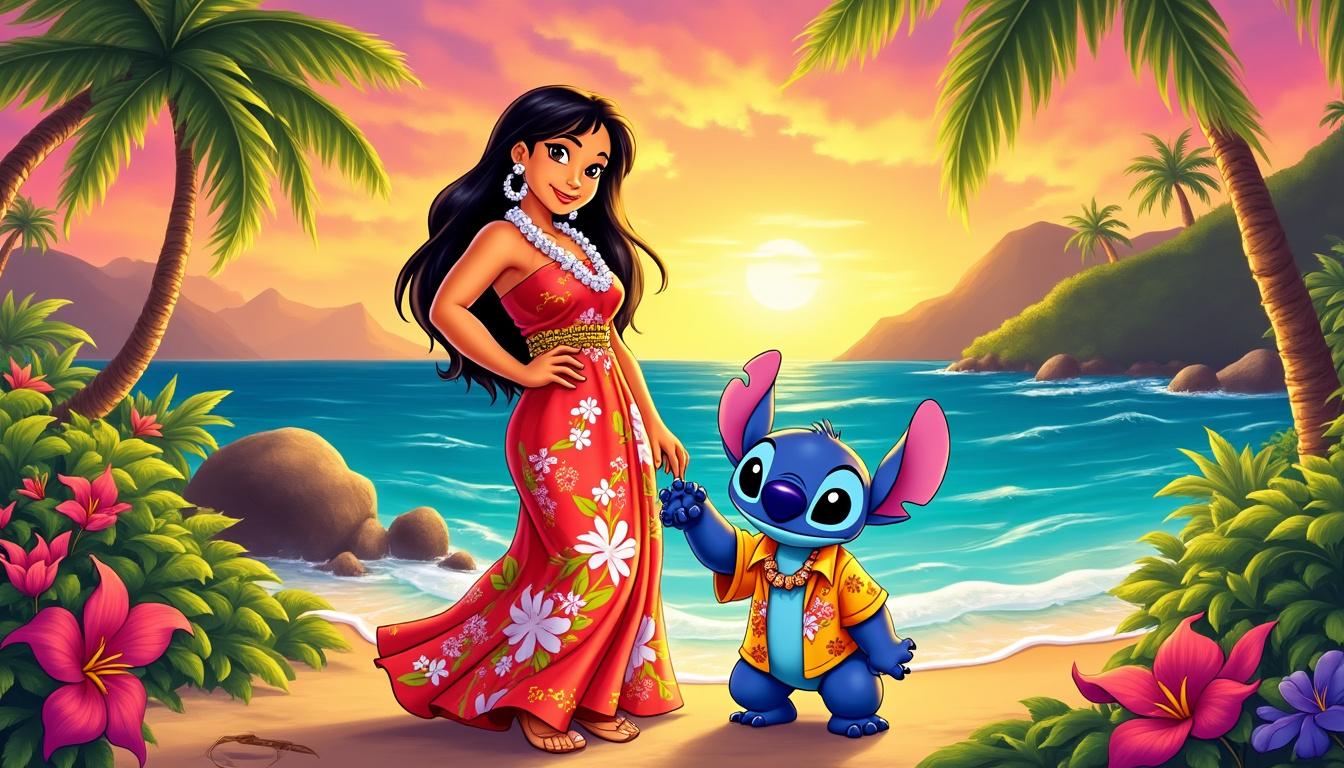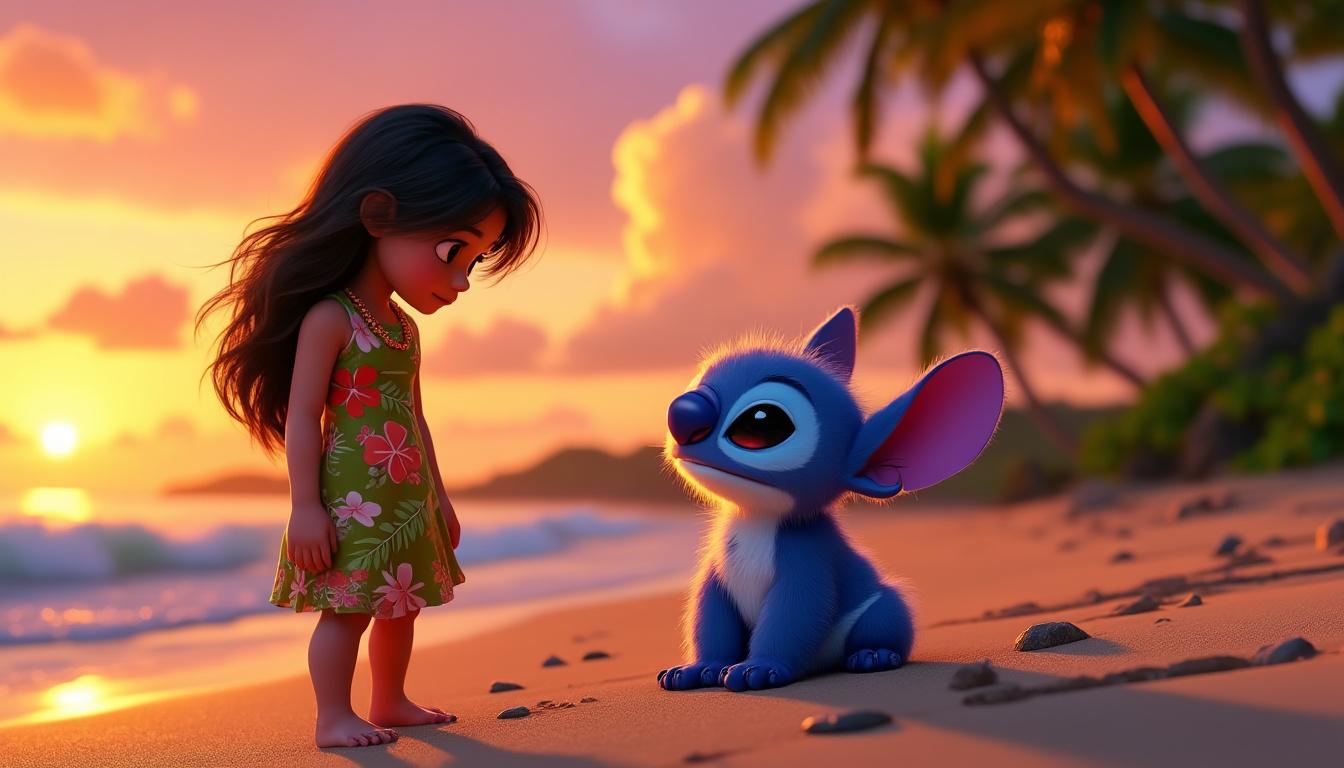The recent release of Disney’s live-action remake of Lilo & Stitch has ignited a firestorm of discussion and controversy, particularly surrounding its changed ending. Fans of the original 2002 animated classic are visibly divided over the new narrative direction taken by the filmmakers. Social media platforms have exploded with reactions and critiques as audiences grapple with the significant alterations made to a beloved story that resonated deeply with its audience. The film has drawn attention not only for its creative decisions but also for its implications regarding themes of family, identity, and cultural representation.
Analysis of the Altered Ending in Disney’s Lilo & Stitch Live-Action Remake
The live-action adaptation recasts the ending in a way that diverges significantly from the animated version. In this contemporary retelling, Nani, portrayed by Sydney Elizabeth Agudong, relocates to California to pursue her dreams of studying marine biology. This pivotal decision leads to an emotional climax where Lilo, played by Maia Kealoha, and Stitch are left with a neighbor instead of remaining under Nani’s guardianship. This marks a stark departure from the original, where Nani’s determination to stay with Lilo is central to the film’s message of familial bonds.

This shift is not merely a plot device; it reflects larger cultural implications. The original film emphasized the importance of ‘ohana – a Hawaiian term meaning family – showcasing the strength and resilience of familial ties, even amidst external struggles. Adaptations in the live-action version evoke concerns regarding the portrayal of such themes and whether they adequately reflect Hawaiian culture. Critics highlight that the new ending may undermine the essence of family values that the original sought to promote.
Fan Reactions and Critiques on Social Media
Following the release of the film, fans have taken to various social media platforms, including X (formerly Twitter), to voice their discontent with the changes made. A significant sentiment is that the remake trivializes the survival of familial units in favor of a more conventional narrative arc. Many voices echo the sentiment that the film producers missed an opportunity to delve deeper into the original themes that resonated with viewers in the first place.
One critical tweet succinctly stated: “Fuck Ohana I guess,” which encapsulates the frustration and disappointment felt by many fans who viewed the revisions as a betrayal of the film’s foundational themes.
- Emotional Impact: The decision for Lilo to be placed in a neighbor’s care rather than remaining with her sister has been seen as detrimental to the emotional core of the story.
- Colonial Context: Critics like author Mariah Rigg argue that the new ending overlooks the film’s critiques of the colonial system in Hawaii.
- Loss of Identity: Many fans feel the ending subtly reinforces a narrative of displacement, eroding connections to cultural roots.
Cultural Representation and Responsibility in Adaptations
The live-action remake has reignited discussions about cultural representation in Disney’s adaptations. With growing demands for authenticity and respect toward the cultures portrayed in films, the stakes for filmmakers have never been higher. The representation of Hawaiian culture, in particular, has been under intense scrutiny. The portrayals of Lilo and her family may raise important questions about how adaptations honor or misinterpret original cultures.
Previously, concerns had been raised about casting choices, some feeling that there wasn’t enough emphasis on authentic representation in the characters’ portrayals. This is underscored by the criticism that the film’s ending contributes to a narrative that overlooks the significance of maintaining familial and cultural ties within Hawaiian communities. The decision for Nani to leave Hawaii creates a sense of abandonment in a story that was originally about communal connection and familial love.

In light of these critiques, it’s vital to evaluate how adaptations like this must grapple with their cultural responsibilities. Audiences expect modern retellings to respect and honor the source material while reflecting contemporary values. A balance between creative freedom and authentic representation is crucial for future adaptations, particularly those rooted in cultures with rich histories.
The Implications of Family Dynamics in the Remake
The family dynamics portrayed in both the original animated film and the live-action remake also highlight contrasting philosophies. In the original, the connection between Lilo and Nani encapsulates a fierce bond strengthened by shared adversity and love. Their unity is painted as a cornerstone of their existence, showcasing the spirit of resilience that defines their relationship.
Conversely, the live-action version portrays Nani’s choice to leave as if to suggest that pursuing one’s dreams necessitates personal sacrifice, underscoring a more individualistic perspective. This could lead audiences to interpret the message in a way that prioritizes ambition over familial obligations, something that conflicts with the original’s themes.
- Strength in Vulnerability: The original film celebrated vulnerability as a pathway to building strong family ties.
- Agency vs. Responsibility: The new ending emphasizes the importance of individual agency, potentially at the cost of familial loyalty.
- Challenges of Adaptation: Directors face the challenging task of encapsulating both modern narratives while staying true to the heart of the story.
The Financial Success versus Critique of Lilo & Stitch Live-Action Remake
In stark contrast to the backlash surrounding the ending changes, the live-action remake of Lilo & Stitch has enjoyed significant financial success. The film grossed $341 million globally during its opening weekend, marking it as one of Disney’s most profitable releases to date. Remarkably, this outcome not only broke Memorial Day weekend box office records in America but also led to speculation about potential sequels or further adaptations.
This commercial success highlights the paradoxical nature of film adaptations today. While passionate fans express discontent over specific changes, widespread audience appeal may overshadow those critical chatter points. Disney faces challenges in navigating an audience caught between nostalgia and contemporary expectations, particularly as it strives to deliver family-friendly narratives that resonate across generations.
| Aspect | Original Film (2002) | Live-Action Remake (2025) |
|---|---|---|
| Box Office Gross | $150 million | $341 million |
| Theme of Family | Emphasis on ‘ohana | Nani’s departure for college |
| Cultural Representation | Hawaiian customs respected | Mixed reactions on authenticity |
| Audience Reception | Cult classic status | Successful, but divisive |
Despite the controversies, the live-action Lilo & Stitch positions Disney’s evolving strategy regarding adaptation and reimagining classic IPs. Not all adaptations will receive a warm welcome, highlighting that bolstered marketing and box office success may not fully substitute for cultural sensitivity and audience resonance.
The Future of Adaptations and ‘Ohana
The discourse surrounding the ending of Lilo & Stitch raises broader questions about the future of adaptations and the need for thoughtful storytelling. As audiences demand more meaningful representations of culture and identity, filmmakers must heed calls for authenticity and resilience in storytelling. Disney’s mantle as a cornerstone of family entertainment comes with a responsibility to reflect real-world values within their narratives, especially as they continue to update cherished classics for new audiences.
Looking ahead, future adaptations could benefit from a more collaborative approach involving cultural consultants or voices from the communities represented. Ensuring a diverse set of perspectives not only enriches the storytelling but also helps bridge the gap between tradition and modern interpretation.
- Engagement with Communities: Collaboration with community members can provide invaluable insights and narratives.
- Testing Audience Sentiment: Audience screenings can identify potential pitfalls before release.
- Emphasizing Authenticity: Striving to maintain the integrity of ‘ohana in narratives will strengthen audience connections.


